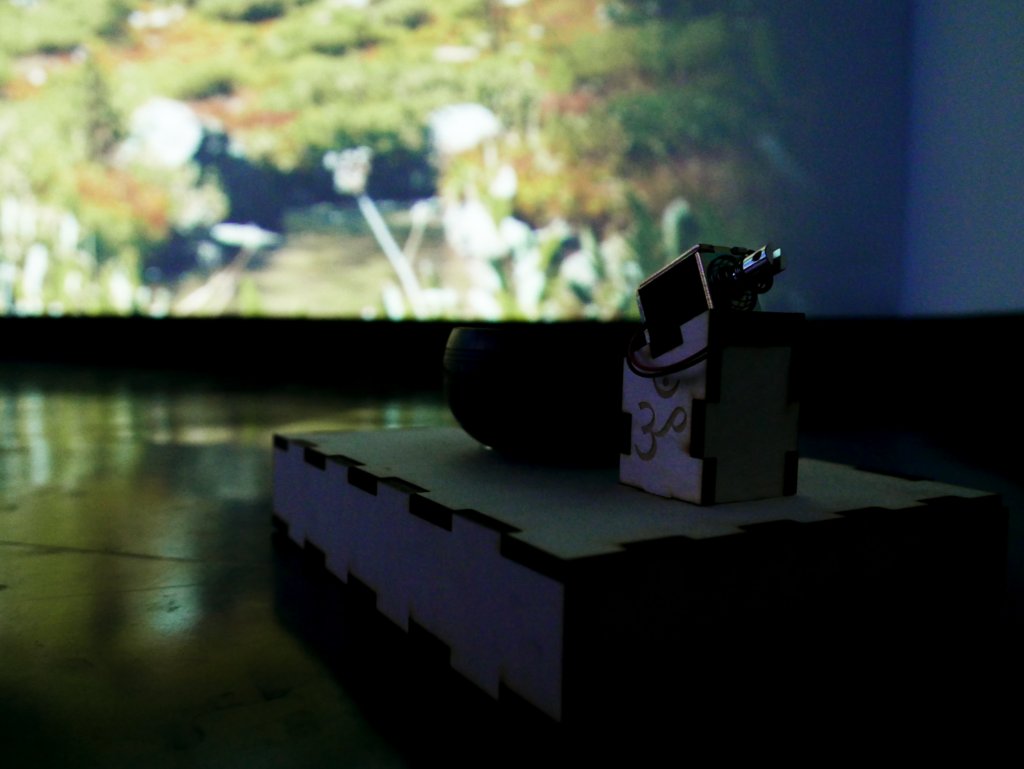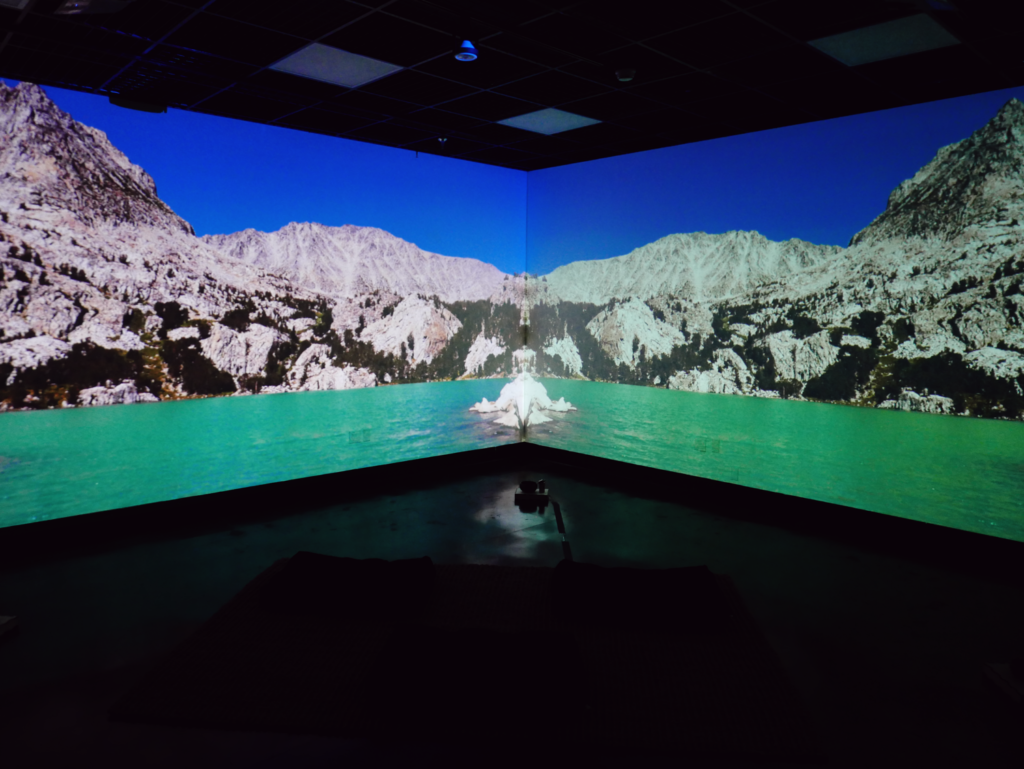This space is an invitation.
To experience this moment, quietly.
To sit and enjoy.
To expand and recharge.
To find stillness in meditation.
To connect with yourself and the surrounding world.
To observe the feelings in your body.
To explore your depths.
To give yourself permission to stop.
To discover what quiet means to you.
The twenty-first century is characterized by technology and hyper-connectivity. It is also associated with constant distraction and activity, whether through highway billboards, television, smartphones, computers or social media. In comparison, quiet spaces free from any distractions have become rare. So the question is: Where is The Quiet?
Abstract: Where Is The Quiet? is a mixed-media installation that utilizes immersive experience design, mechatronics, and machine learning in order to enhance wellness and increase connectivity to the natural world. Individuals interact with the installation by wearing a brainwave interface that measures the strength of the alpha wave signal. The interface then transmits the data to a computer that uses it in order to determine the individual’s overall state of relaxation. As the individual achieves higher states of relaxation, mechatronic instruments respond and provide feedback. This feedback not only encourages self-awareness but also it motivates the individual to relax further. Visitors without the headset experience the installation by watching a film and listening to an original musical score. Through the novel arrangement of technologies and features, Where Is The Quiet? demonstrates that mediated technological experiences are capable of evoking meditative states of consciousness, facilitating individual and group connectivity, and deepening awareness of the natural world. As such, this installation opens the door to future research regarding the possibility of immersive experiences supporting humanitarian needs.
Source: https://www.nime.org/proceedings/2019/nime2019_paper064.pdf
https://vimeo.com/299370692
This paper caught my attention because of the brainwave interface technology. In the first semester the group of the interaction designers had a course with Eva Schindling, who works successfully in this field. It was very impressive and aroused my interest for those interfaces.
Together in small groups, we had the possibility to experience and work with brainwave interfaces, in specific with the Muse device. We built a rapid prototype in Max and like in the What is The Quiet? installation, we measured the relaxation of a participant as determined by the strength of alpha wave activity in their brain. Depending on the state of the relaxation, the visual of the flower reacts. The calmer and more relaxed an individual has been, the bigger and more open the flower appeared. I can totally related to the point, that this visual, which is also a form of feedback, encourages mindfulness and motivates the user to relax further.

The What is The Quiet? installation wasn’t only composed of film, musical score and brain interfaces, but also utilizes mechatronic singing bowls and a seating area. I really think, that the seating area, designated by a carpet and several mediation cushions, created an even further immersive experience. Adding to the immersive quality were two spatialize audio components. Beside a musical score which was played through each of the four speakers located in the ceiling, three self-playing singing bowls were placed surrounding the seating area. This system emulated an experience known as a sound bath. A sound bath is a relaxation technique and meditative experience whereby participants ‚bathe‘ in the sound waves produced by human voice or/and instruments such as gongs, wind chimes, drums and singing bowls.

I really like the aspect of this self-playing singing bowls because it evokes deeper states of consciousness. As I experienced myself during the workshop with Eva Schindling, the environment and its background noises can really distract you. I can imagine, that those singing bowls were helpful in focusing and deepening their state of relaxation. As it was written in the paper, some participants described the opposite effect, that the sound and noise from the mechatronic system distracted them. Maybe this relate to the fact, that participants are subject to a varying sound experience deepening on where they choose to lie down in the seating area.
One point of criticism would be that the user can control the singing bowls with the Muse device, but doesn’t get any visual feedback and ‚changes’ on the screen. The projectors showed on two perpendicular walls with the corner acting as a point of symmetry footage of landscapes in California, The Adirondack Park and Vermont. It played as a 15 minute loop. I think it worked better when they used one picture that became more abstract due to the two walls than the two separate landscape photos.

All in all, I really believe, that installations like What is The Quiet? are able to connect individuals, not only to themselves and others but also to the surrounding world. Also relating to the numbers of mediations and mindfulness applications in the App Store, it shows that this topic is a growing area. A mixed-media installation is a great opportunity to create an even more immersive viewing experience.
In addition, I would also like to add that the structure and description of the paper really helps me to understand what you have to consider when setting up such an installation. The flow of data and the feedback loops as well as the challenges and limitations they described, are great inspiration and good forms of visualization which I might can use for some upcoming projects.